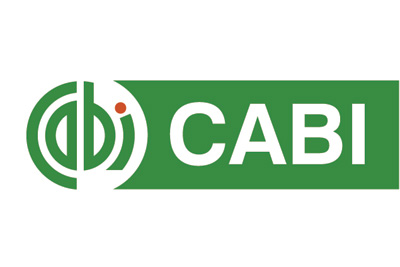Çukurova bölgesinde kafeslerde Asya kedi balığını (pangasianodon hypophthalmus sauvage, 1878) farklı yem kaynağı ve farklı açlık döngüleri ile beslemenin büyüme performansı üzerine etkileri
Abstract
Çalışmada iki farklı yem kaynağı (sazan yemi ve alabalık yemi) ile döngülü açlık ile besleme periyodu uygulanarak beslenmesinin Asya kedi balığının (Pangasianodon hypophthalmus) büyümesine vücut kompozisyonuna ve yem değerlendirmesine olan etkilerinin belirlemesi hedeflenmiştir. Bu amaçla, 13.87±0.12 ile 14.13±0.12 g arası 720 birey 3 tekerrürlü olarak, 6 grup şeklinde denemeye alınmıştır. Gruplar; sadece ve sürekli olarak sazan yemi ile beslenen (SY), alabalık yemi ile beslenen (AY), sazan yemi ile 1 gün aç 6 gün tok beslenen (SY&1A+6T), sazan yemi ile 2 gün aç 5gün tok beslenen (SY&2A+5T), alabalık yemi ile 1 gün aç 6 gün tok beslenen (AY&1A+6T), alabalık yemi ile 2 gün aç 5gün tok (AY&2A+5T), şeklinde beslenen gruplar olarak belirlenmiştir. Bu gruplar günde 4 öğün doyana kadar 77 gün boyunca beslenmiştir. Deneme sonunda tüm uygulamaların, grupların yaşama oranına etkisi olmadığı bulunmuştur. Denemede en iyi büyümenin AY grubunda (383.70±2.93g) olduğu ve bu grubu 355.56±2.24 g ile AY&1A+6T grubunun izlediği gözlenmiştir. Spesifik büyüme oranına açısından da en iyi orana AY grubunda ulaşılmıştır. Yem çevrim oranı açısından gruplar arasında SY&1A+6T ve SY&2A+5T grupları en yüksek değerlere ulaşırken diğer tüm gruplar birbirine benzer FCR sonuçlarına ulaşmışlardır. Ekonomik analizler açısından değerlendirildiğinde en düşük dönüşüm oranı SY grubundan (4.37±0.51) en yüksek ECR değerinin AY&2A+5T grubundan (5.24±0.09) elde edildiği görülmüştür. Ekonomik Yarar Endeksi açısından ise en yüksek değer AY grubundan (2.64±0.01) en düşük değer de SY&2A+5T grubundan (1.62±0.01) belirlenmiştir. Açlık tokluk döngülü beslenmesi açısından değerlendirildiğinde grupların telafi büyümesi yapamadığı gözlenmiştir. Sonuç olarak Alabalık yeminin Asya kedi balıklarının Çukurova koşullarında kafeslerde daha iyi performans sağladığı, açlık döngüsü açısından da sürekli beslemenin daha iyi sonuç verdiği belirlenmiştir.
Supporting Institution
Ç.Ü.Bap BİRİMİ
Project Number
FDK-2014 2400
References
- Adaklı, A., & Taşbozan, O. (2015). The effects of different cycles of starvation and refeeding on growth and body composition on European sea bass (Dicentrarchus labrax). Turkish Journal of Fisheries and Aquatic Sciences, 15(3), 419-427.
- Adewolu, M.A. & Benfey, T.J. (2009) Growth, nutrient utilization and body composition of juvenile bagrid catfish, Chrysichthys nigrodigitatus (Actinopterygii: Siluriformes: Claroteidae), fed different dietary crude protein levels. Acta Ichthyol. Pisc.39,95-101
- Ali, M. and Wootton, R.J. 2001. Capacity for growth compensation in juvenile three-spined sticklebacks experiencing cycles of food deprivation. J. Fish Biol., 58: 1531-1544. doi:10.1111/j.1095-8649.2001.tb023 10.x
The effects of different feed sources and different starvation cycles on the growth performance of Asian cat fish (pangasianadon hypophthalmus sauvage, 1878) in cages in Çukurova region
Abstract
In the study, it was aimed to determine the effects of application of two different feed sources (carp feed and trout feed) with starvation and re-feeding cycles on the growth of Asian catfish (Pangasianodon hypophthalmus) on body composition and feed conversion ratio. For this purpose, 720 individuals between 13.87 ± 0.12 and 14.13 ± 0.12 g were included in the trial in 6 groups with 3 replications. The experimental groups; fed only and continuously with commercial carp feed (SY), fed with commercial trout feed (AY), fed 1-day starvation and 6 days full with commercial carp feed (SY & 1A + 6T), 2-days starvation and 5 days full fed with commercial carp feed (SY & 2A + 5T) The groups fed with commercial trout feed 1-day starvation and 6 days full (AY & 1A + 6T), 2-days starvation 5 days with commercial trout feed (AY & 2M + 5T). Each experimental groups were fed to satiation 4 times a day for 77 days. At the end of the experiment, it was found that all the applications did not affect the survival rate of the groups. It was observed that the best growth in the trial was in the AY group (383.70 ± 2.93g), followed by the AY & 1A + 6T group with 355.56 ± 2.24 g. In terms of specific growth rate, the best value was achieved in the AY group. In terms of feed conversion ratio, SY & 1A + 6T and SY & 2A + 5T groups reached the highest values among the groups, while all other groups achieved similar FCR results. When evaluated in terms of economic analysis, it was seen that the lowest conversion rate SY group (4.37 ± 0.51) and the highest ECR value was obtained from AY & 2A + 5T group (5.24 ± 0.09). In terms of Economic Profit Index, the highest value was determined from the AY group (2.64 ± 0.01) and the lowest from the SY & 2A + 5T group (1.62 ± 0.01). When evaluated in terms of starvation and re-feeding cycles, it was observed that the groups could not make compensatory growth. As a result, it was determined that trout feed provided better performance in cages of Asian catfish under Çukurova conditions, and continuous feeding gave better results in terms of starvation-refeeding cycle
Project Number
FDK-2014 2400
References
- Adaklı, A., & Taşbozan, O. (2015). The effects of different cycles of starvation and refeeding on growth and body composition on European sea bass (Dicentrarchus labrax). Turkish Journal of Fisheries and Aquatic Sciences, 15(3), 419-427.
- Adewolu, M.A. & Benfey, T.J. (2009) Growth, nutrient utilization and body composition of juvenile bagrid catfish, Chrysichthys nigrodigitatus (Actinopterygii: Siluriformes: Claroteidae), fed different dietary crude protein levels. Acta Ichthyol. Pisc.39,95-101
- Ali, M. and Wootton, R.J. 2001. Capacity for growth compensation in juvenile three-spined sticklebacks experiencing cycles of food deprivation. J. Fish Biol., 58: 1531-1544. doi:10.1111/j.1095-8649.2001.tb023 10.x
Details
| Primary Language | Turkish |
|---|---|
| Subjects | Fisheries Management |
| Journal Section | Research Articles |
| Authors | |
| Project Number | FDK-2014 2400 |
| Publication Date | December 31, 2020 |
| Submission Date | October 27, 2020 |
| Acceptance Date | December 27, 2020 |
| Published in Issue | Year 2020 |



